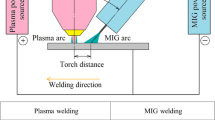Abstract
Surface machined by high-speed wire electrical discharge machining (HS-WEDM) at high energy (average current >8 A) suffers from surface burn and reduced cutting speed increase-rate, a major problem which is investigated in this paper. According to the study, the debris is mainly expelled out of the inter-electrode gap by the liquid medium. When machining at low energy, the gap is full of water-based medium, and the debris is mainly expelled by this medium. However, at high energy the medium in the gap is enormously vaporized and is then reduced due to a thermal load at high energy. Thus, the debris cannot be removed from the gap in time, resulting in its deposition and eventually leading to the surface burn. To overcome this limitation, it is suggested that within a range of discharge energy levels, the erosion products of the HS-WEDM process should be driven by a medium carrier with a higher melting point and vaporization point to ensure that there is sufficient liquid medium in the gap at high energy to carry and expel the debris out of the machining zone. Experiments were conducted by increasing the JR1A (traditionally used dielectric medium) -to-water ratio to increase the content of high-melting-point medium, thus validating the theory. Based on the experimental results, a new type of dielectric medium, JR1H, was formulated to ensure that there is still sufficient liquid medium to expel the debris at large energy machining. A greater threshold of stable cutting speed (more than 330 mm2/min) was achieved with the machining current of 15 A using JR1H, which is a significant breakthrough in higher efficiency HS-WEDM.
Similar content being viewed by others
References
Patil PA, Waghmare CA (2014) A review on advances in wire electrical discharge machining. In: Khangura S, Singh P, Singh H, Brar G (eds) Proceedings of the international conference on research and innovations in mechanical engineering. Lecture Notes in Mechanical Engineering. Springer, New Delhi
Maher I, Sarhan AAD, Hamdi M (2015) Review of improvements in wire electrode properties for longer working time and utilization in wire EDM machining. Int J Adv Manuf Technol 76:329. doi:10.1007/s00170-014-6243-3
Fan SY, Zhang QJ, Chen HW, Zeng WX (2013) Nonlinear dynamics analysis of multi-cutting wire electrode in WEDM-HS subjected to working fluid considering the effect of debris. J Mech Sci Technol 27:3595–3605
Haas P, Pontelandolfo P, Perez R (2013) Particle hydrodynamics of the electrical discharge machining process. Part 1: physical considerations and wire EDM process improvement. The seventeenth CIRP conference on electro physical and chemical machining (ISEM). Procedia CIRP 6:47–52
Liu ZD (2014) The development trend of high speed reciprocating wire electrical discharge machining. Machining Technology of Aeronautics 19:40–45
Wang W, Liu ZD, Shi WT, Zhang YQ, Tian ZJ (2016) Surface burning of high-speed reciprocating wire electrical discharge machining under large cutting energy. International advanced manufacturing technology 87:2713
Liu ZD (2013) The present situation and development of high speed reciprocating wire EDM. Mach Manuf Automa 42:1–6
Zhang Z, Huang H, Ming WY, Xu Z, Huang Y, Zhang GJ (2016) Study on machining characteristics of WEDM with ultrasonic vibration and magnetic field assisted techniques. J Mater Process Technol 234:342–352
Wang J, Han FZ (2014) Simulation model of debris and bubble movement in consecutive-pulse discharge of electrical discharge machining. Int J Adv Manuf Technol 74:591–598. doi:10.1007/s00170-014-6008-z
Li MH (1989) Theoretical foundation of electrical discharge machining [M]. National Defense of Industry Press, Beijing
Liu ZD (2011) Application and processing of electrical machining [M]. National Defense of Industry Press, Beijing, pp 172–176
Author information
Authors and Affiliations
Corresponding author
Rights and permissions
About this article
Cite this article
Pan, H., Liu, Z., Li, C. et al. Enhanced debris expelling in high-speed wire electrical discharge machining. Int J Adv Manuf Technol 93, 2913–2920 (2017). https://doi.org/10.1007/s00170-017-0716-0
Received:
Accepted:
Published:
Issue Date:
DOI: https://doi.org/10.1007/s00170-017-0716-0




